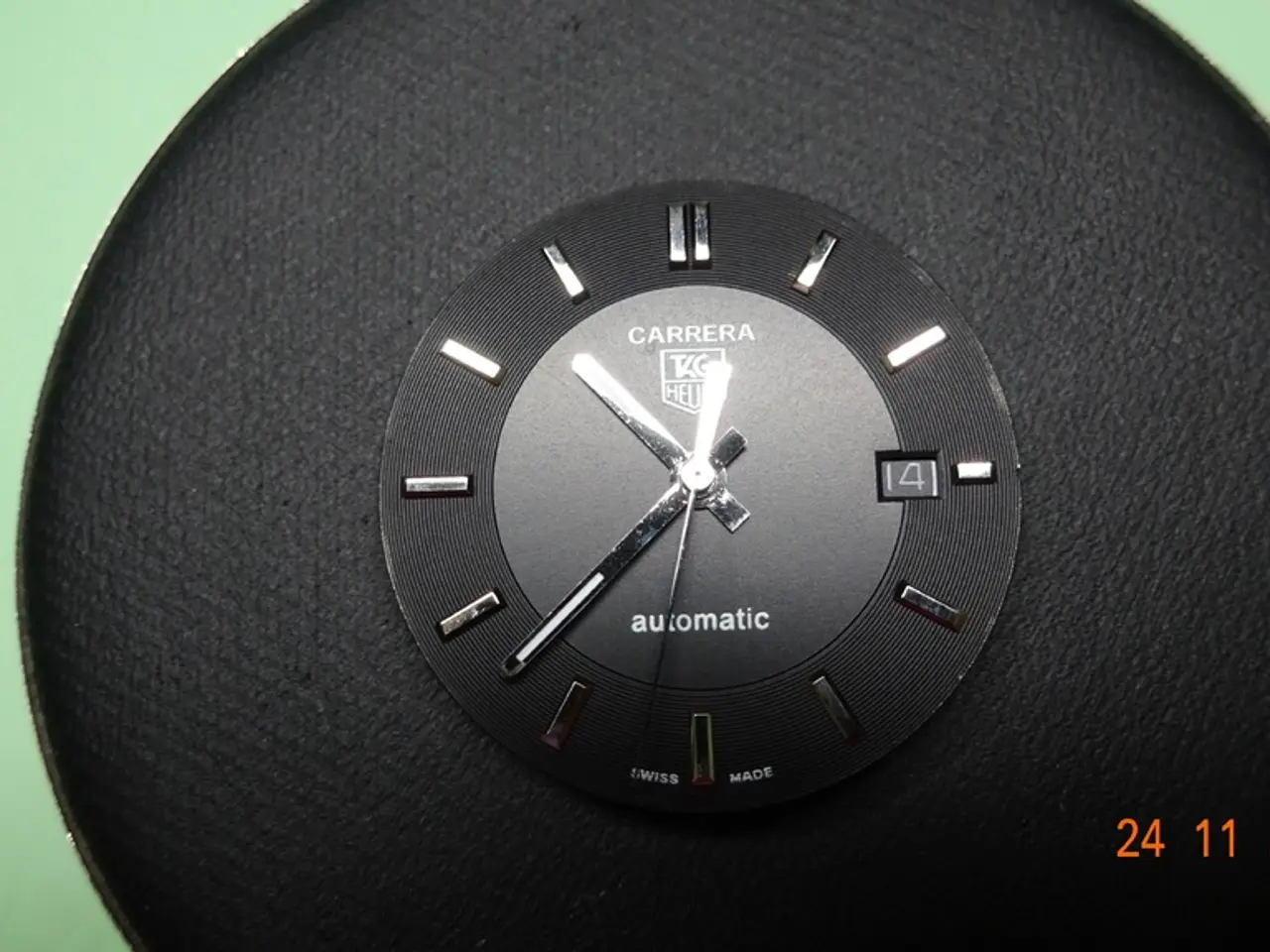Electrical Engineering Competition of 2025: Consistently Matching Mains Frequency Using CMOS Clock in Electromechanical Systems
Christian's innovative clock project, a first submission to the One Hertz Challenge, showcases an electromechanical CMOS clock that offers a distinctive approach to timekeeping [1]. Instead of relying on digital components and microcontrollers, this clock employs CMOS logic circuits and a 200-step stepper motor that is powered directly by the mains electricity.
At the heart of this clock lies a 12-bit CMOS counter (CD4040), which divides pulses to generate signals for hours, minutes, and seconds. Unlike traditional clocks, this clock drives coil meters for hours and minutes through DAC circuits based around DAC0808 chips.
Christian's ingenious idea was to run the 200-step stepper motor directly from the 50 Hz AC mains, using a capacitor to create a 90-degree phase shift in the coil currents. This allows the motor to advance one step per 1/50th of a second, resulting in one revolution per second.
Attached to the motor shaft is a 3D-printed arm and a light barrier sensor. Once per second, this arm interrupts the light beam, creating a precise 1 Hz pulse that acts as the seconds signal input for the CMOS clock logic. This innovative method cleverly uses the stable frequency of the mains supply as a time base, converting it into a mechanical rotation that then provides a clean seconds pulse without the need for complex electronics.
The clock does not produce a low frequency "hum" of mains current, an aspect that might appeal to some people. Its construction is respectable considering the era of instant-gratification through micro-controllers. A demonstration video of the clock project is available below.
However, it's important to note that the clock project does not specify the use of any specific DAC or counter circuits beyond the CMOS chips. Additionally, the clock in question does not indicate whether it is free of a low frequency "hum" of mains current.
In essence, Christian's CMOS clock project is a blend of classic CMOS logic design and an innovative use of the mains frequency and stepper motor to create a unique mechanical CMOS clock. This project is a testament to the versatility of electromechanical components and the ingenuity of its creator.
| Feature | Description | |-------------------------------|------------------------------------| | Clock type | CMOS logic-based electromechanical | | Stepper motor | 200-step, run directly on 50 Hz AC | | Frequency conversion | One revolution per second | | Seconds pulse generation | 3D-printed arm interrupts light sensor once per revolution | | Purpose | Provides 1 Hz seconds signal for CMOS clock counters |
[1] Source: Christian's clock project documentation and demonstration video.
- This innovative clock project by Christian, showcasing the use of a 12-bit CMOS counter and a 200-step stepper motor, exemplifies a unique approach to timekeeping that integrates technology by employing CMOS logic circuits and electromechanical components.
- The clock's distinct method for generating seconds pulses, through a 3D-printed arm and a light barrier sensor, demonstrates the project's use of technology by drawing upon the stable frequency of the mains supply and converting it into a mechanical rotation.




